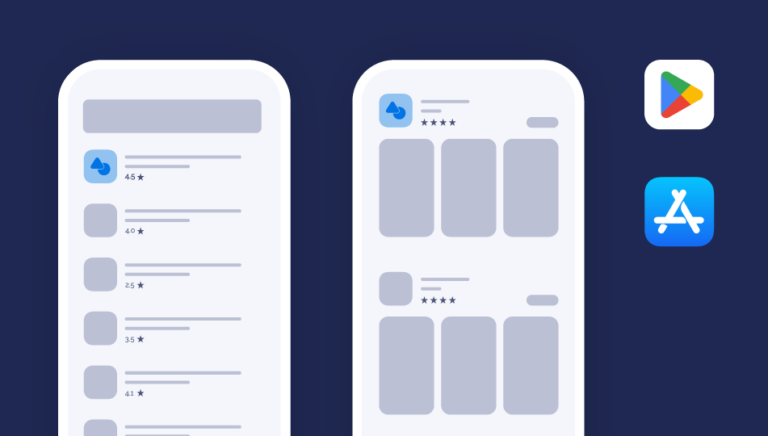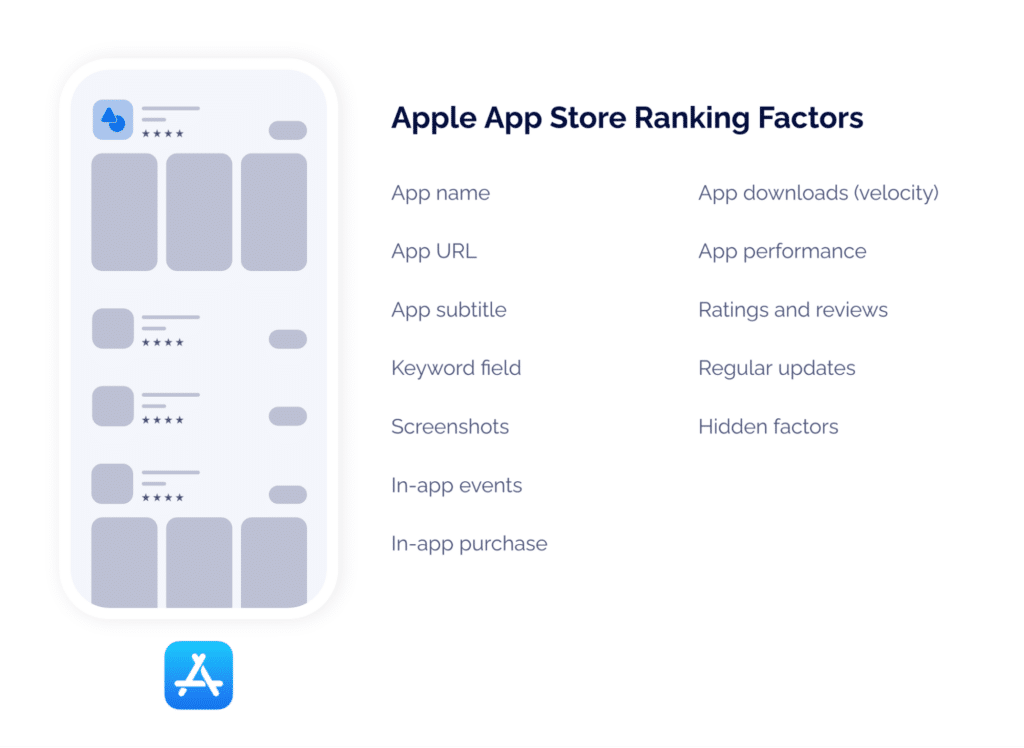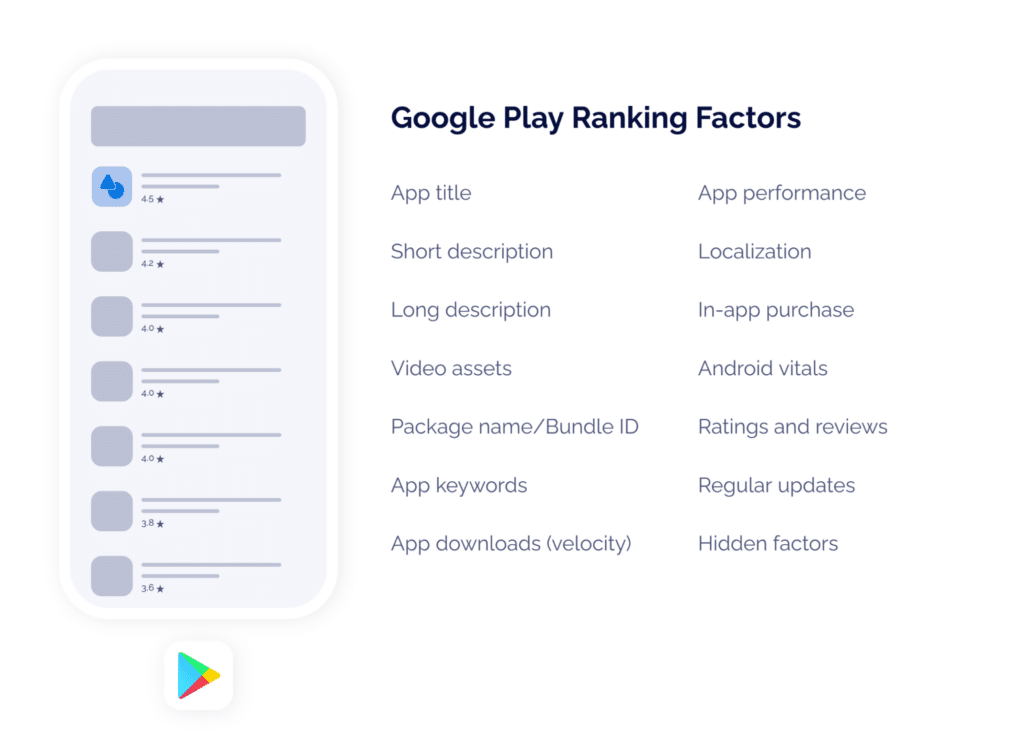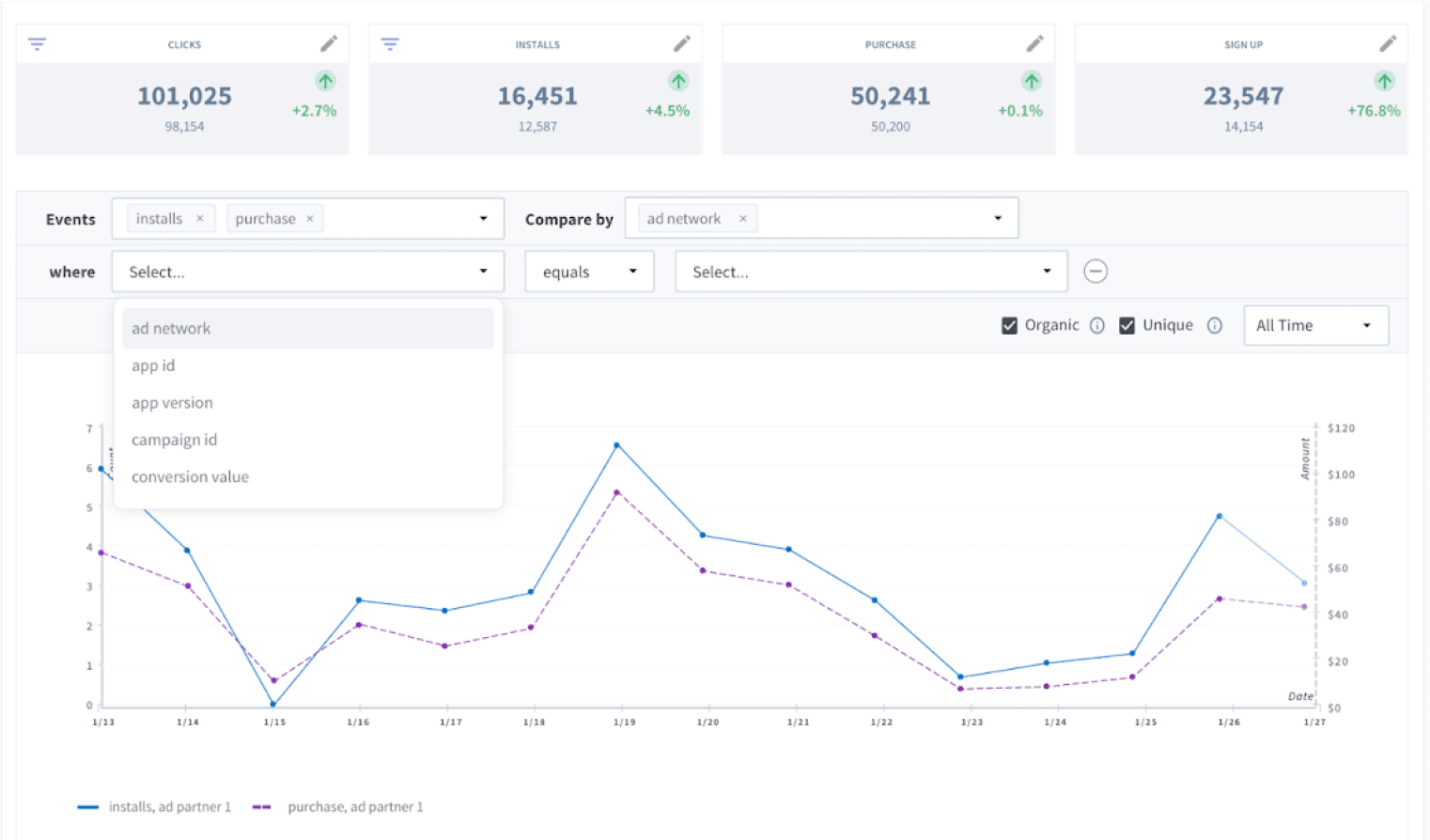MOBILE APP GROWTH
How to get more mobile app installs
Acquire new app users from any channel
Request a demoApplication installs are the holy grail for mobile marketers and app developers. Getting more users to a mobile app can increase user engagement, boost app store rankings, generate monetization opportunities, and ultimately driver higher conversions and sales.
More app installs also means more data; the more users on a given app there are, the easier it is to gather feedback and identify areas for improvement. Marketers can leverage this data to create even better user experiences and grow engagement and revenue. Fortunately, there are many ways to drive more user installs, from leveraging the app stores on iOS and Android to social media and app install campaigns. Here’s how.
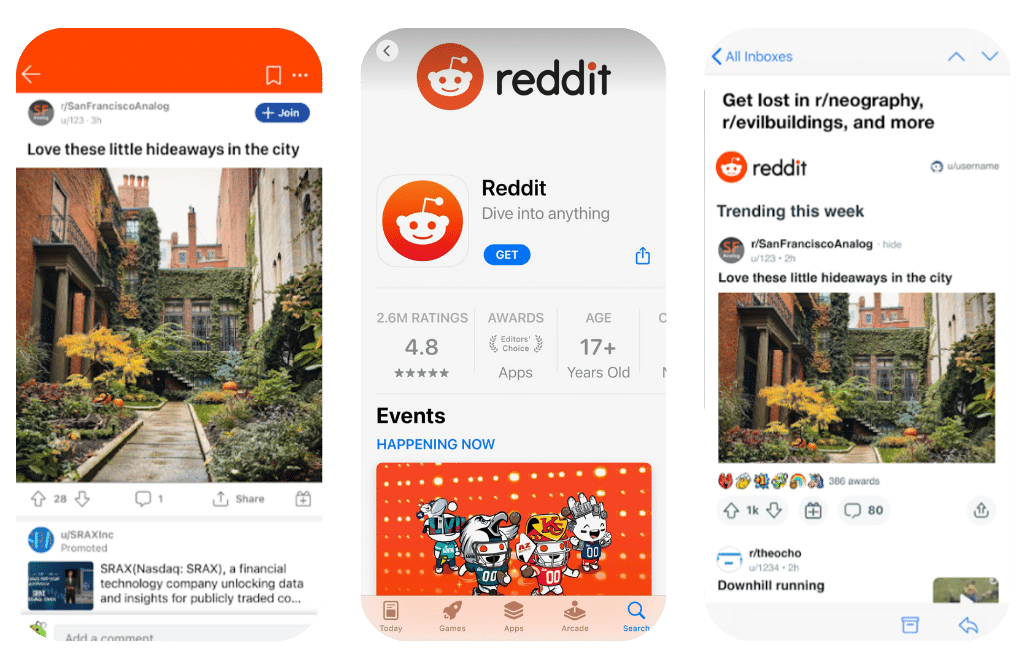
Lay a strong foundation with a strategic plan
The best marketers and app developers don’t do anything without a strategic marketing plan in place — one that has clearly defined goals and desired outcomes. It starts with creating clear objectives and understanding the target audience. Then, refine the value proposition so potential users understand what an app has to offer and why they should download it. At this stage, it’s also important to define how success will be measured.
Next, identify the right marketing channels for your campaigns. These may include a mix of paid and organic, email marketing, cross-promotional activities, social media, and the business’ own website. If a brand is launching a new app, its marketing plan should include both a pre-install campaign and an app install campaign.
The purpose of a pre-install campaign is to create awareness about the app and build excitement before it launches. Doing so can help draw a large userbase so marketers can hit the ground running at go-live. Pre-install campaigns may include teasers, special offers, or incentives for installing the app upon release.
Once the app is live, marketers and app developers kick the launch campaign into high gear with more marketing and promotional activities that build upon the pre-install efforts to acquire new users.
Take advantage of social media to drive app downloads
Social media has become integral to successful marketing, and marketing a mobile app is no different. Platforms like Instagram, TikTok, YouTube, and WeChat help app developers reach vast and diverse audiences, communicate their value proposition, and generate buzz while connecting with prospective users.
While social media can help marketers and app developers reach the masses, it can also facilitate hyper-targeted promotions. Social media platforms offer the ability to zero in on audiences based on their demographic, user behavior, geographic location, and other other attributes. Collaborations with influencers also help to extend a brand’s reach in a more personalized way by promoting the app to an influencer’s loyal fan base.
Finally, marketers and app developers can leverage their brand’s own social media channels to build an engaged community of app users. By encouraging users to share their positive experiences in the form of user-generated content, brands can leverage the power of social proof to grow the app’s reputation and influence potential users. Plus, users turn to social media to share their thoughts, opinions, and reviews everyday — so marketers can glean valuable data from their social media presence that may be useful in improving user experiences.
RTLZWEI, a Munich-based TV station, used Branch deep links in its organic posts on Instagram and the YouTube Community Feed to direct users to the Love Island app during the show’s broadcast period. Upon clicking a link, users were directed to the app store to download the Love Island app, then automatically taken to their desired episode. By increasing traffic to the app from social media, RTLZWEI sourced 52% of all its app opens and 20% of app installs through Branch links.
Optimize the app store
An essential part of mobile app marketing is app store optimization (ASO). This process helps potential users find apps by improving their visibility and ranking in app store search results (like the Google Play Store and Apple App Store). There are many ways app developers and marketers can make an app more discoverable by the target user audience.
First, keywords matter, so it’s important to select words and phrases that will lead users to the specific app. Like search engine optimization (SEO), ASO involves strategically choosing keywords that match user intent to ensure the app appears in relevant searches. Find the right ones by looking carefully at competing apps, analyzing user search behavior, and identifying keywords that have high traffic but not a long list of search results.
The information users see in your app store listing also impacts app ranking. Choosing clear, concise app names and app descriptions that contain keywords is critical to success. Visuals are important too: the app icon should be appealing and draw in users. Be sure to include high-quality app screenshots as well as videos that demonstrate the app’s key features to encourage app downloads.
Ratings and reviews also influence an app’s visibility in search results. Encourage users to add positive reviews and provide feedback on their experiences. Don’t forget to monitor the comments to quickly identify any issues users raise.
How to track app installs
After laying the foundation and implementing a comprehensive app marketing strategy, the next step for marketers and app developers is measuring their success through key performance indicators (KPIs).
Perhaps the most obvious metric to measure is app installs. But it’s not enough to know the total number of installs. Marketers need to appropriately measure and attribute app installs to a marketing or campaign source. This means knowing how to measure user-to-user referral installs, app installs from social media platforms like TikTok or offline quick response (QR) codes, as well as other cost-related metrics like cost per install (CPI).
To get started, marketers and app developers can use a tracking tool to gather and analyze data related to app installs. By setting up a tracking code within the app, teams can capture relevant information, such as downloads and installs. Tracking tools also gather user behavior data and display app-related insights in an analytics dashboard, including user engagement, session length, and retention.
Attribution tools can take analytics a step further by providing insight into the source of app installs so marketers can understand which marketing campaigns were most effective in driving app downloads. This can help them optimize budget allocation and maximize return on advertising spend (ROAS).
Baazi Games, a leading player in the Indian online gaming industry, has a multi-pronged approach to marketing — it leverages social media, partners with influencers, and runs paid ads on OTT platforms. Before using Branch’s, it was using multiple separate performance marketing tools to measure campaign performance, but didn’t have a single source of truth and thus couldn’t make data-driven decisions to optimize mobile growth. Using Branch’s mobile measurement partner (MMP) solution, Baazi Games was able to capture attribution data across their different apps, platforms, and campaigns. Thanks to the insights, it optimized its performance marketing mix to prioritize the highest-performing channels, yielding a 25% increase in year-over-year installs and 50% growth in daily active users.
Invest in boosting app installs
Ultimately, boosting app installs is well worth the time and effort required, since app users are more valuable to brands than non-app users. Strategic efforts can increase brand visibility, elevate app rankings, yield valuable user feedback, and, most importantly, generate revenue and drive profitability.
Ready to grow your app installs?

Get Started
10 Tactics To Drive Higher Mobile App Installs in 2023
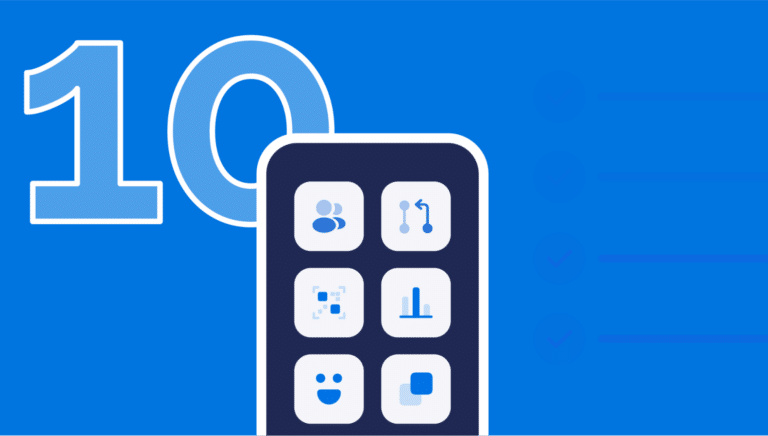
Mobile Growth Handbook: Industry Insights and Best Practices
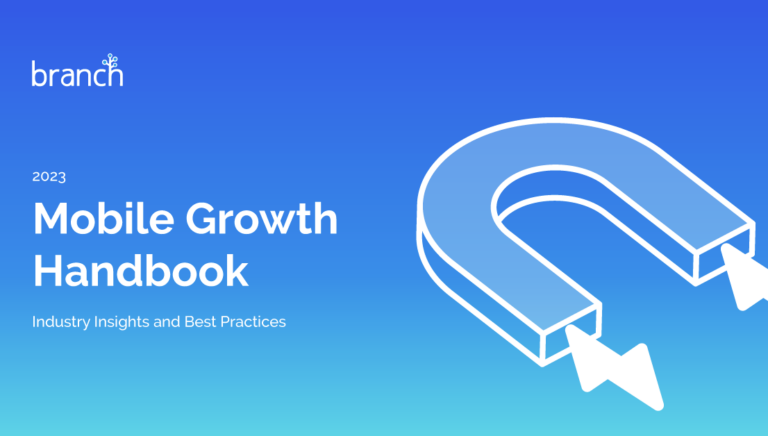
App Store Optimization Best Practices
